+CRAP.jpg) As some of you reading this may be aware, Pacific Lumber in Humboldt County, Ca is currently undergoing drastic changes during the ill-fated timber company's Chapter 11(not 13) bankruptcy. The proceedings were moved to Texas after parent(al figure) company MAXXAM set up a phony "office" in Corpus Christi in order to keep local opinion and intervention out of the proceedings.
As some of you reading this may be aware, Pacific Lumber in Humboldt County, Ca is currently undergoing drastic changes during the ill-fated timber company's Chapter 11(not 13) bankruptcy. The proceedings were moved to Texas after parent(al figure) company MAXXAM set up a phony "office" in Corpus Christi in order to keep local opinion and intervention out of the proceedings.Logo from http://www.gapsucks.org/
The bankruptcy plan, simplified, has many different entities vying for control over PL's 200,000+ acres of Coast Redwoods and Douglas Firs. The most locally favored plan allowed by bankruptcy proceedings Judge Richard S. Schmidt was submitted by Marathon Capital Group backed Mendocino Redwoods Corporation(MRC). Ironically, the MRC is owned by The Gap corporation, and has a history of community resistance towards it’s logging practices in Mendocino County.
The MRC has Forest Stewardship Council(FSC) certification which creates a major misconception for the local community and conservation groups in regards to the future of our forests. It seems that a majority of concerned citizens and groups have been duped into believing that the MRC will not be harvesting Old-Growth trees on PL's disputed lands. Wishful thinking, lack of information, and blatant ignorance has created an atmosphere of believing that the lesser of the evil reorganization plans will save the last of the Ancient Trees left on our county.
Aside from the controversy over the lack of unified Old Growth protection, MRC will be utilizing herbicides, logging steep slopes, clear cutting, and removing previously inaccessible trees by helicopter, as they have and still are using these practices in Mendocino County. All of these unsustainable and environmentally destructive practices are allowed by the FSC, and nowhere on the FSC site do they claim otherwise. In fact, the MRC justifies it’s usage of herbicides through The Nature Conservancy‘s “Weed Control and Methods Handbook“. The Nature Conservancy appears to be just another “green washed” group, just like the FSC.
So what is the lesson to be learned here? I believe that the attitude of “if you can’t beat them, join them” has infiltrated the same non-profit groups that are supposed to protect their donor’s interests and ideals. Sell outs, compromisers, and panderers are allowing the last of our precious ecosystems to be annihilated during this crucial time where our Earth has reached a critical tipping point. The FSC is one of many so-called “green” and “sustainable” non-profits that are cashing in on the newest fad of Orwellian double-speak, the same technique used by the US government to justify the Iraq war through fear and semantically altered catch phrases such as “Homeland Security“ and “War on Terrorism“.
However, in light of this deception and controversy, action is still the antidote for despair. Humboldt County, one of the birthplaces of forest activism, has been fighting for Old Growth protection for over twenty years. There are still solid and persevering tree-sits taking place right now on PL’s disputed lands. One action, Fern Gully Tree-sit Village in Freshwater, Ca, is going on strong for six years coming this October. Nanning Creek Tree-sit Village near Scotia, Ca, home of the famous “Spooner” tree, continues to safeguard some of the largest Coast Redwoods ever protected since November of 2005. And let’s not forget The Mattole, located in the Lost Coast, Ca. The Mattole is continually monitored for any sneaky attempts by PL to log the Ancient Douglas Firs that were defended by countless and dedicated activists since 1983.
Regardless of what happens to PL, and despite the fact that so many have been conned into believing that our Ancient Trees left standing on PL land will be saved by Mendocino Redwood Corporation, activists will continue to oppose PL, MRC, or any entity that claims to be “green” and “sustainable”, when in actuality they are the opposite. Actions speak louder than words, and in these current times, it seems that words are less likely to be based in reality.
Jeff Muskrat
Please read the below blog entry from http://www.rainforestportal.org/issues/2008/03/alert_stop_the_forest_liars_ce.asp#comments
They brought this issue to my attention.



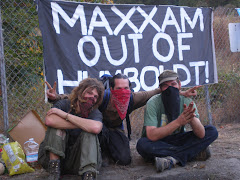

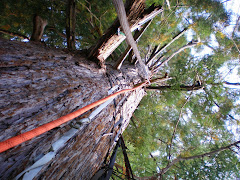
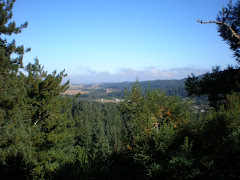
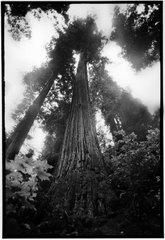

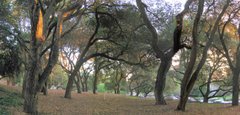


6 comments:
PS. This was brought to my attention by http://www.rainforestportal.org/issues/2008/03/alert_stop_the_forest_liars_ce.asp
You mean Chapter 11.
Here's the FSC watchdog site:
http://fsc-watch.org/
I thought it was Chapter 11 as well, but from North Coast Journal
March 16 "The Town Dandy" column:
..."will be putting the issue to a vote, according to the complex rules of Chapter 13 bankruptcy law. The votes are due around the end of the month."
Hank's goof. My bad for following his example:)
From http://www.gapsucks.org/
Rainforest Action Network Statement on Mendocino Redwood Company (MRC) logging
in Mendocino and Sonoma Counties, CA:
Rainforest Action Network is gravely concerned about the impacts of Mendocino Redwood
Company (MRC) logging on 235,000 acres of redwood forest for the past three years in
Mendocino and Sonoma Counties, California.
Ancient redwood forests are one of the earth’s most spectacular natural wonders. Yet after
years of logging, over 96% of America’s ancient redwoods have been lost, a situation that is
endangering many species that rely on old growth forest habitat. For this reason, RAN
supports permanent protection as the ideal solution for landowners in the redwood region.
Heavily damaged redwood forests (such as MRC’s land) should be allowed or managed to
return to old growth forest characteristics. We feel that MRC’s current program of logging is
not ensuring recovery of endangered species, nor is it permitting the return to late
successional redwood forest characteristics.
The case of MRC also raises troubling questions about the strategic direction of wood
product certification.
The greatest dangers to certification come from pressure to log in areas that should be off
limits or to weaken management standards in order to increase the volume of certified
products in the marketplace. The quickest route to losing public support is to log old
growth forests that should simply be off-limits to any industrial activity. In the case of
Mendocino Redwood Company, the problem is at the other end of the spectrum: logging
in areas that are already heavily degraded, where endangered species such as Coho
salmon and spotted owls are extirpated or barely hanging on.
From both an ecological and public perspective, the FSC endangers its credibility by
marketing products from the habitat of endangered species and by certifying logging in
areas that are in the midst of land-use controversy. In order to have public credibility, the
FSC must be able to ensure that products did not: a) come from areas that should not be
logged, and b) where logging is allowed, that it take place in the most ecologically
appropriate manner.
Considering the history of degradation on MRC lands and the broad public desire to see
the redwood ecosystem restored, RAN believes that the best solution for the redwood
ecosystem and the forests of Mendocino County would be for MRC to permanently
protect its forest lands.
March 2002
I wonder what made them change their minds about the FSC?
MRC's Option A from their site states:
Option A
Wildlife Habitat Old Growth MRC will not harvest old growth as defined below:
Terrestrial – Un-entered stands of more than 20 acres.
– Stands of 5 acres or more with an average of 6 old growth
trees per acre or more (old growth trees defined as trees over 250
years old and 48 inches d.b.h. or larger) .
– Individual residual old growth trees with significant wildlife
value (eg. large limbs, cavities, nesting platforms, limited available
structures).
I have to ask:
-Can the MRC log "entered" stands containing old-growth?
(Most TPZ's have been entered, in fact, I'd like to see an unentered stand that is not a park or refuge)
-Can the MRC log old growth stands less than 20 acres?
(Most of the old growth stands left in TPZs are very small residual groves)
-Can the MRC log stands of old-growth that are more than five acres containing 5 or less old growth trees per acre?
(An acre is a very small piece of land, how many old growth trees can you fit in an acre? To achieve this requirement, 30 OG trees would have to exist on 5 acres. Furthurmore, residual Old growth trees and groves are extremely rare on TPZs, and the chance of finding 6 or more OG trees on one acre is extremly low).
-Who determines the "significant wildlife value" of residual old growth trees? (Besides wildlife surveyors, who else but the MRC?)
Our old growth may be safer if MRC takes over, but they better get up, walk, and clump together in a central location. Saftey in numbers, right?
Post a Comment